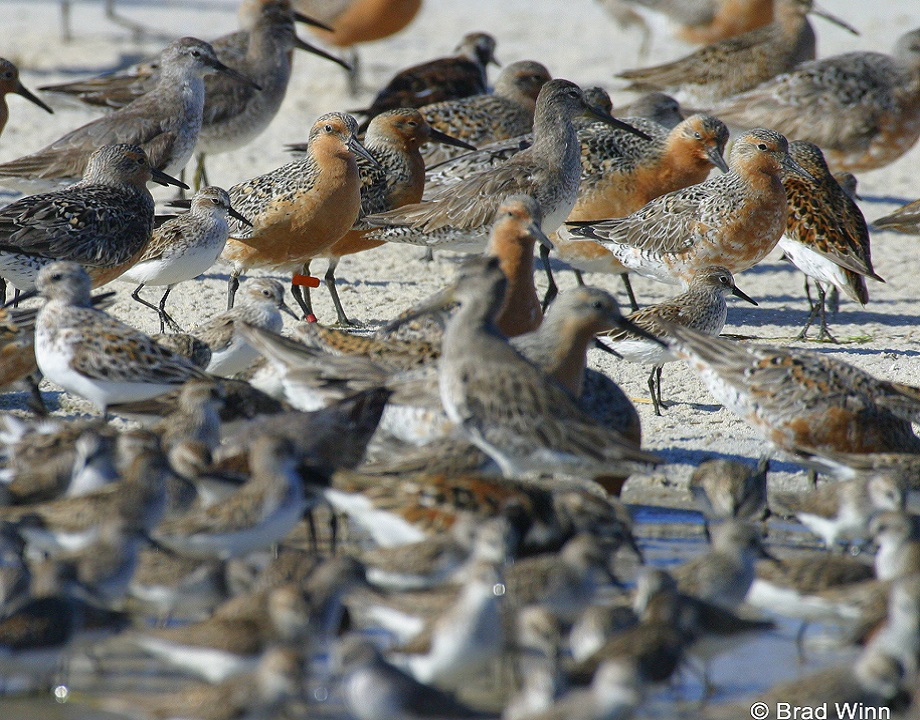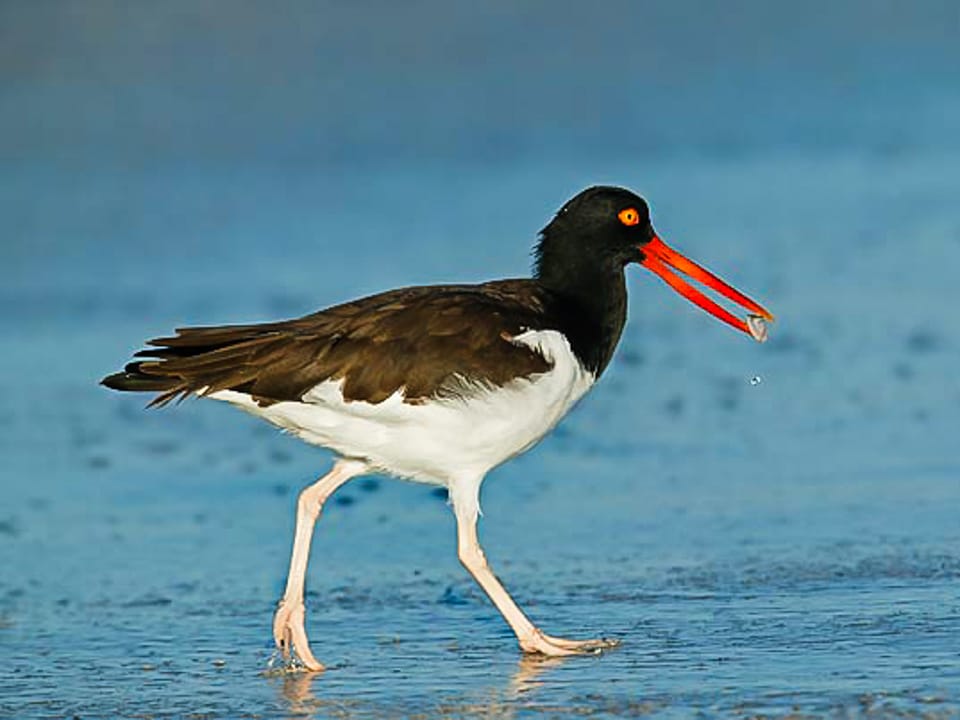
As fall finally begins to sweep along the Georgia coast, we gratefully admire the golden spartina-filled marshes, the intense blue of the autumn sky, the gauzy purple of the Muhlenbergia grass, and the whirling flocks of migrating tree swallows. Our shorebird migration is winding down, and all along the coast volunteers have been working with Tim Keyes of the Georgia Department of Natural Resources, me from Manomet, and other partners to collect data for the International Shorebird Survey (ISS).
The ISS started in 1974 by Manomet, with the goal to understand more about all aspects of shorebird migration. Volunteers and professional biologists contribute to this long-running monitoring network by counting shorebirds about every ten days at their favorite birding spots. All of the counts are analyzed to help us understand migration timing, migration routes, population trends, and habitat use. The main objective for observers is to get to specific sites during both the spring and the fall, and completely count all the shorebirds. As of 2017, over 100,000 ISS counts had been collected by more than 800 volunteers at over 3,400 locations in 48 states and across 24 countries within the Western Hemisphere!
And this is just the beginning. Through targeted workshops carried out by Manomet’s Habitats for Shorebirds Project, more individuals throughout the Americas are getting involved with ISS surveys, which helps to increase coverage and will allow us to better understand shorebird populations across the hemisphere. For example, a recent workshop this summer in Manitoba led to a launch of new ISS surveys in the region. In an interview with CBC, Christian Artuso, the Manitoba regional director for Bird Studies Canada and organizer of the provincial introduction to the project, said that “It’s kind of high time that we got some of this going in the migration pathway in Manitoba.”
One of the most exciting aspects of ISS data is that it is being actively used to inform conservation, research, and create public outreach about the declining shorebird populations. Most impressively, ISS is really a citizen science project, and has been driven by the passion of volunteers for the past 44 years, who are interested in donating their time to help collect these valuable shorebird data.
On the Georgia coast, this means collaborating with barrier island managers to prioritize ISS counts, and working with volunteers to establish new monitoring sites, increasing the coverage of our shorebird-rich coast. This can be very challenging due to the remote locations of some sites and surveys that rely on boats for transportation. Here, shorebirds use barrier island beaches and sand flats for resting and feeding, but they also use piles of wave washed shells, called shell rakes, to roost above high tides in larger bays between our islands. It can be incredibly difficult to see, let alone count these birds piled up in dense flocks along the marsh edge and stacked among the rows of white, sun-bleached oyster shells.

Last week, while in Wassaw Sound near Savannah at the mouth of the Wilmington River, our team was astounded to see six Least Sandpipers tucked into the shells on a rake—their small size highlighted by the fact that they were literally sleeping inside the oyster shells! We also saw one of the very few Long-billed Curlews that exist on the U.S. Atlantic Coast. This bird, largest of North American shorebirds, stood tall in stark contrast to the tiny Least Sandpipers. Historically, Long-billed Curlews were abundant on the East Coast during migration and wintering, but due to unregulated hunting for sale to restaurants in the late 1800s, and loss of habitat, it’s now thought that fewer than 20 Long-billed Curlews overwinter in the Southeastern United States. Flocks of Black-bellied Plovers, Semipalmated Plovers, Western Sandpipers, Short-billed Dowitchers, and American Oystercatchers were the most abundant species on our final survey through the Sound, indicating that many of the shorebirds that winter farther south have already passed through.
Participating in ISS surveys provides volunteers the opportunity to observe migration patterns and to appreciate the incredible birds that stop by our coasts on a much larger journey that connects us to Central and South America. We get the chance to puzzle over cryptic shorebirds in their duller winter plumage, and then be wowed by their bright breeding plumage as they return north in the spring on their way to Arctic breeding grounds. And our volunteers are making a real difference by contributing to surveys that play an important role in shorebird conservation. In order to continue to gather this data, we need support, funding, and volunteers. We are looking forward to continuing to expand the coverage of the ISS, and provide training and tools if you are interested in taking on a count. Plus, data entry has been made simple by partnering with eBird! The spring surveys will begin in March—to get involved in Georgia, please contact me at asterling@manomet.org for Georgia. If you’d like to do the ISS anywhere else, reach out to Brad Winn at bwinn@manomet.org.





 Back to all
Back to all



